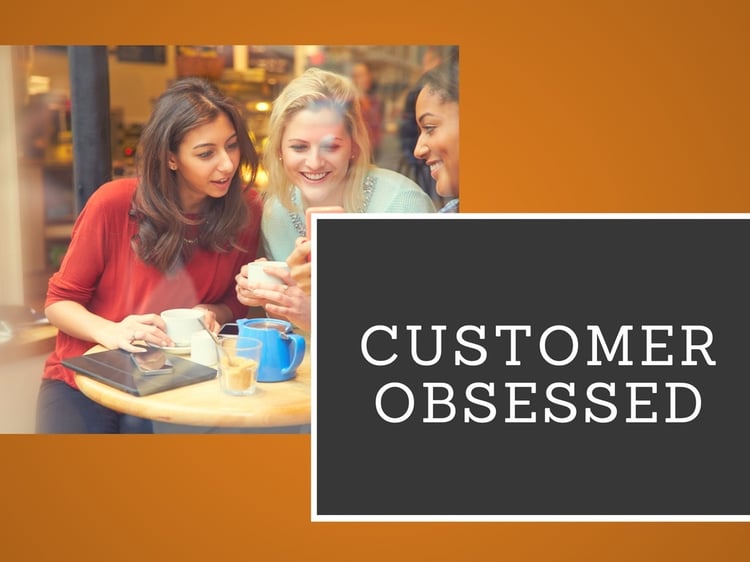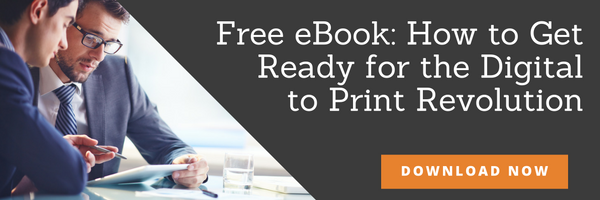If you are like most marketing agencies you are already increasing your retargeting budgets for your clients so with that in mind, here are five reasons why you should...

It’s impossible for a business to survive without marketing. But marketing is a means to an end. A company can’t sell its products without getting the word out, and the best way to entice customers is to put the message in the terms that most appeal to them. Marketing isn’t about the company — it’s about the customer, without whom the business could not grow. In order to truly focus on the customer, companies must retrain themselves to learn everything they can about their customers. A data-driven approach is essential for the continued implementation of customer-focused marketing.
Customer-Centric vs. Customer-Obsessed
A lot of companies like to consider themselves customer-centric marketers. In fact, you’d be hard-pressed to find a company that didn’t self-identify in this way. After all, the company has to wow the customer in order to succeed, and all companies claim to have the best interests of their customers at heart. But while it’s one thing to claim to be customer-centric, it’s something entirely different to implement customer-focused marketing and use it to its fullest potential.
Because of the success of data-driven marketing efforts to target customers, customer-centric marketing is becoming more widespread every day. However, there’s a massive difference between using customer-centric marketing as a tactic and being customer-obsessed — in other words, possessing the mindset that makes customer-focused marketing a regular practice.
Being customer-obsessed means putting the customer first in every way. It doesn’t neglect the customer when ROI is threatened, nor does it put profits ahead of the customer experience. A customer-obsessed organization is one that prioritizes the customer, not because it’s a means to an end, but because the company knows that a satisfied customer is the best asset a company can have. It’s only through this customer-obsessed mindset that true customer-centric marketing can take place on a large scale.
The Value of Putting the Customer First
Placing a high priority on your customers means more than simply saying what your audience wants to hear when you want them to buy something. It’s about getting to know your biggest advocates on a personal level. It’s about understanding their needs, their wants and their pain points, and how your company fits into their lives. It’s hard work, but it’s imperative for any company that truly wants to be customer-obsessed.
The good news is there’s a prize at the end of the road for those companies who make the effort to understand their customers. Not only can you gain a better understanding of your own company’s role in the lives of your customers, but you’ll also develop the ability to better market to your audience. There’s serious value in personalization, and it can drive your revenues to new heights.
According to Experian, data-driven personalization is increasingly important to customers, and that value isn’t limited to discounts. Simply acknowledging the customer and offering personalized service, such as product recommendations and recognition of long-term loyalty, are just as valuable to the modern consumer as a monetary reward. This approach allows you to build serious goodwill with your customer base without having to resort to issuing an endless stream of promo codes that cut into your margins.
Using Data to Understand Your Customers
The reality of marketing today is that without data, you’re pretty much just throwing marketing tactics at the wall and seeing what sticks. If you don’t have the numbers to back up a given marketing approach, that tactic is likely to fail, at least over the long term. If you want to personalize your marketing in line with a customer-obsessed mindset, you need the data that guides you to making the right recommendations and send the right messages to your customers. Failure to do so jeopardizes that customer’s experience and feeling about your company.
It’s important to understand exactly which data points drive consumer behavior and to use those in your marketing. Many companies are consumed with vanity metrics, such as Facebook likes and shares, but the truth is that those numbers mean little to your bottom line. They might look good to the outside observer, but they’re useless if they don’t drive sales and ROI.
Your main focus should be on identifying the typical path to purchase taken by different groups of customers. For some consumers, email marketing might be the main driver of business; for others, direct mail may be more effective. The important thing is to notice this path and to break it down into its most basic elements. How do people find your company? What indicates interest from a prospective customer? How much research do they do before making a purchase? Understanding the path to purchase will tell you the story of your various customer groups, and that’s where you’ll start to make things happen.
Once you know what a customer encounters along their path to purchase, you can begin to track the numbers that facilitate action. It’s this data that will help you to personalize your marketing message. The more you know about your various segments of customers, the better equipped you’ll be to use your customer data to personalize communications. Additionally, having a baseline for customer data will help you notice changes in the marketplace, making you better equipped to respond to any shifts that may occur among your customer base.
Be When, Where and What Your Customers Need in the Moment
At the end of the day, marketing isn’t complicated. It’s about sending the right message at the right time, in the manner that most resonates with a given customer. However, accomplishing this without the data that dictates exactly what those customers need, and when they need it, is simply not possible. You need a system for identifying these needs, and a data-driven approach that puts the customer first is the best way to achieve your marketing goals.
The truly customer-obsessed company will find a way to meet its customers where they are — on their preferred devices, in their preferred methods of communication. This is an important piece of the puzzle; in fact, it might be the most important piece. The ‘right’ message delivered the wrong way accomplishes little. The entire package has to work for the customer in order to truly provide the necessary value that encourages loyalty and brand advocacy.
It may take time to get to the point where personalization and customer obsession are second nature, and that’s okay. Part of the customer-obsessed mindset is the tacit admission that the company doesn’t know everything about its audience. That’s why collecting and monitoring data is so important. By letting data govern your approach, you’re essentially letting your consumers have a major say in how they’re marketed to. Needless to say, giving customers this power — and meeting their expectations every step of the way — is a tremendous way to gain favor with your customer base. More importantly, it also ensures you’ll be able to provide them with the marketing messages that will help them resolve their pain points or address their desires as soon as they arise.
In order to market effectively, it’s necessary to not only know what the customer wants, but also what motivates that customer to buy. Customer-focused marketing is the data-driven solution to understanding the needs of each customer on an individual basis. Once you know the path your audience takes as they move closer to purchase, you’ll be able to nurture your prospects with pieces of timely and personalized marketing. Utilizing this data while simultaneously monitoring your information will keep your marketing effective, both now and in the future.

